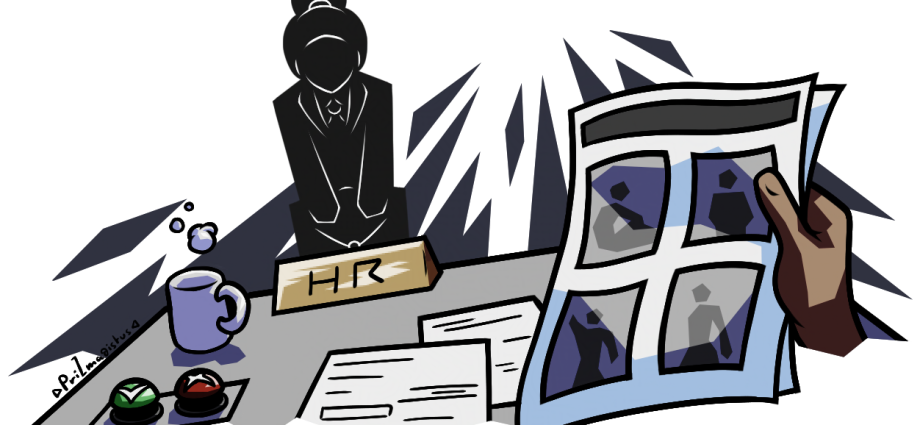Written by Sol Zeev-Ben-Mordehai
Aging was a prominent theme in The Substance, a satirical body horror film released last year that explored society’s demanding bodily expectations of women. The film begins when Elisabeth Sparkle, an established network star (played by real-life hollywood legend Demi Moore), is abruptly ostracised by Hollywood on her fiftieth birthday. Yearning to reclaim her former glory back, she injects The Substance, lured by the possibility of unlocking a “younger, more beautiful, more perfect” version of herself. The film eerily mirrors Hollywood’s incessant obsession with youth and beauty, with The Substance paralleling the epidemic of plastic surgery, botox and more recently Ozempic obsession. While penalising women for visible aging may be common practice in the entertainment industry, the story may be more complex in the corporate workplace.
Professionals, especially those with aspirations of becoming leaders, must appear competent and authoritative. Ideally, they would be judged solely on their experience and conduct, however, appearances matter. It is an easy metric to quickly judge someone’s competence. Age, for example, can act as a proxy for wisdom and experience. Younger employees can look up to senior staff for guidance. In this context, visible aging can be an asset, conveying information about an individual’s experience. However, for women, it seems that at every stage of their career they encounter ageism that negatively impacts their chances of becoming leaders.
The youth (and beauty) of women entering the workforce presents as enthusiasm and energy. This same youth also signals their inherent inexperience, positioning them as workers to be molded rather than trusted decision-makers. This type of ageism can impact how respected young professions feel and how much agency they are given. Mid-career, women must perform a juggling act. A woman must be attractive enough to be perceived as approachable yet authoritative enough to be respected. Too much youthfulness, risks being dismissed as lacking experience or unable to command authority, yet, too mature may be perceived as ‘past the prime’. At this stage, appearances can either reinforce or undermine authority. Allowing gray hairs to show may, thus, boost credibility, creating the perception of experience. Additionally, the older look may make women “less attractive” (in the stereotypical sense), resulting in a less sexualised gaze, allowing them to be taken more seriously. This same visible aging can, however, also relegate women to being perceived as outdated or less relevant. While this may also apply to older men, it seems that “traditional” ageism leads to the scrutinisation of different competencies. For older women this means their intellectual competences are at risk while physical competence is in question for older men, something that women weren’t expected to have in the first place.
Age is also a signal to specific life markers. For instance, going on maternity leave may be a hiring ‘risk’ for managers when interviewing younger women, while older women must deal with the associations of menopause. These signals can result in biassed managerial perceptions and influence subsequent hiring and promotions. It should be nuanced that visible aging can look different for different ethnicities, and occur at different ages, meaning these biases do not affect everyone the same.
The language surrounding women in leadership positions further complicates their experience. In popular culture, the vitalisation of neologisms like “girly”, “girlboss” describing successful women in corporate roles infantilizes professional women. Especially contrasted with the masculine descriptors of “man” and “boss”. This difference paints women as imposters in the corporate world, subtly suggesting they have infiltrated the top without being worthy. Gendered corporate vocabulary is not a new phenomenon. Previously, women were labelled as “bossy” rather than “leaders”, making gender in itself a criteria for leadership. With the addition of age as a modifier, the scrutiny intensifies: even when a woman reaches a leadership position, her legitimacy there is questioned.
A last note: context is also important. The role of culture and industry-specific-standards intermix with all aforementioned arguments. For example, in East Asia, respecting elders is a fundamental value instilled from a young age, meanwhile women face structural discrimination in professional settings. In this context, women often face discrimination due to cultural beliefs surrounding family responsibilities. Alternatively, in the tech industry, there is plenty of evidence for ageism. The average age in the tech companies is under 30, for example in Facebook it is 28. This is not only because young individuals are the ones applying. There are also financial reasons for this, for instance, younger employees are cheaper for startups. Simultaneously, there are also cognitive biases at play, namely, that innovation in tech comes from the youth. Combined with the male-dominated nature of the tech industry, these biases make it more difficult for older women to thrive.
Ultimately, corporate workplaces must recognise and address the aging pressures women face at different career stages. The challenge for working women seems to lie in navigating this double bind: appear competent without being penalised for your grey hairs. At the same time, it’s on us to be mindful of the language and narratives we choose to promote. So for the women, maybe it’s time to stop plucking those white hairs. Or maybe not. It depends, what’s your job title?
Edited by Age Steenbreker, Illustrated by Prizmagistus

